Player Profile: Billy Hamilton's fantasy value hurt by his ghastly OBP

To kick off our fantasy baseball preview, Michael Beller will profile certain players who may not fit as a breakout, sleeper or bust (all of which we'll discuss in our preview), but who will still make a major impact in fantasy baseball this season.
There is currently a player in the majors named Billy Hamilton. You undoubtedly know this Billy Hamilton well. He is a lot of things. He’s fast and he’s young. He’s a phenomenal defensive center fielder and very good baserunner. He’s maddening and hopefully still growing as a player.
• Every MLB Winter Report Card | Follow free-agent signings with our tracker
What he is not, however, is the first Billy Hamilton in the major leagues. No, the original Billy Hamilton was born a little less than a year after Robert E. Lee and the Army of Northern Virginia surrendered at Appomattox. He was in the majors from 1888 through 1901 and he, too, was a lot of things. One of those things, which our modern-day Hamilton would be wise to try to emulate, was an on-base machine. Nineteenth century Billy Hamilton had a career OBP of .455. Contemporary Billy Hamilton just posted a ghastly .292 OBP in his rookie year. If our Billy Hamilton is ever going to reach his potential, he’s going to have to take a page from his namesake’s book.
Player profile: Lucas Duda's power makes him a sneaky late-round pick
Hamilton’s big problems at the plate are pretty easy to see. He strikes out too much and walks far too infrequently. His strikeout rate last season was 19.1 percent, which isn’t downright awful, but is still on the wrong side of league average. What’s even more troubling for his future was his 5.6-percent walk rate, a laughable number for perhaps the fastest player in the majors. The fact that he stole 56 bags despite his ugly OBP was a testament to his speed.
Earlier in our Player Profile series, we looked at a player with a very similar record as a hitter. Dee Gordon didn’t strike out as frequently as Hamilton last year, but his walk rate was even worse (4.8 percent) in essentially the same number of plate appearances. Gordon’s .326 OBP wasn’t anything to write home about, but it translated to him getting on base 11.6 percent more often than Hamilton did last year. How did Gordon get reach base at a rate that seriously eluded Hamilton?
The first thing that jumps out is the difference in BABIP. Hamilton’s was .304 while Gordon’s was a blistering .346. Go beyond that, and you’ll find the real difference, as well as the key to Hamilton’s potential fantasy turnaround in 2015. Hamilton’s ground-ball rate was just 41.5 percent, while his fly-ball rate was 37.3 percent. Gordon’s were 59.7 percent and 19.1 percent, respectively.
Player Profile: Why Chris Davis could be this year's fantasy bargain
Hamilton was the only player who fits the all-speed/no-power profile to send so many balls skyward. In addition to Gordon’s low fly-ball rate, Ben Revere’s rate was 14.3 percent, Nori Aoki’s was 17.1 percent and Elvis Andrus’ was 20.9 percent. Even the speedy Starling Marte, who has decent pop, put the ball in the air just 29.2 percent of the time. We all remember when Lou Brown coaxed a superstar season out of Willie Mays Hayes by forcing him to do pushups every time he hit a fly ball. Maybe Bryan Price should try the same thing this spring training.
In all seriousness, I looked at delved into why Gordon, Revere and Andrus (sorry Nori) succeeded where Hamilton failed. The first thing I did was check out each player’s swing rate by zone, courtesy of Brooks Baseball, thinking that perhaps Hamilton swings at high pitches more than his fellow speedsters.
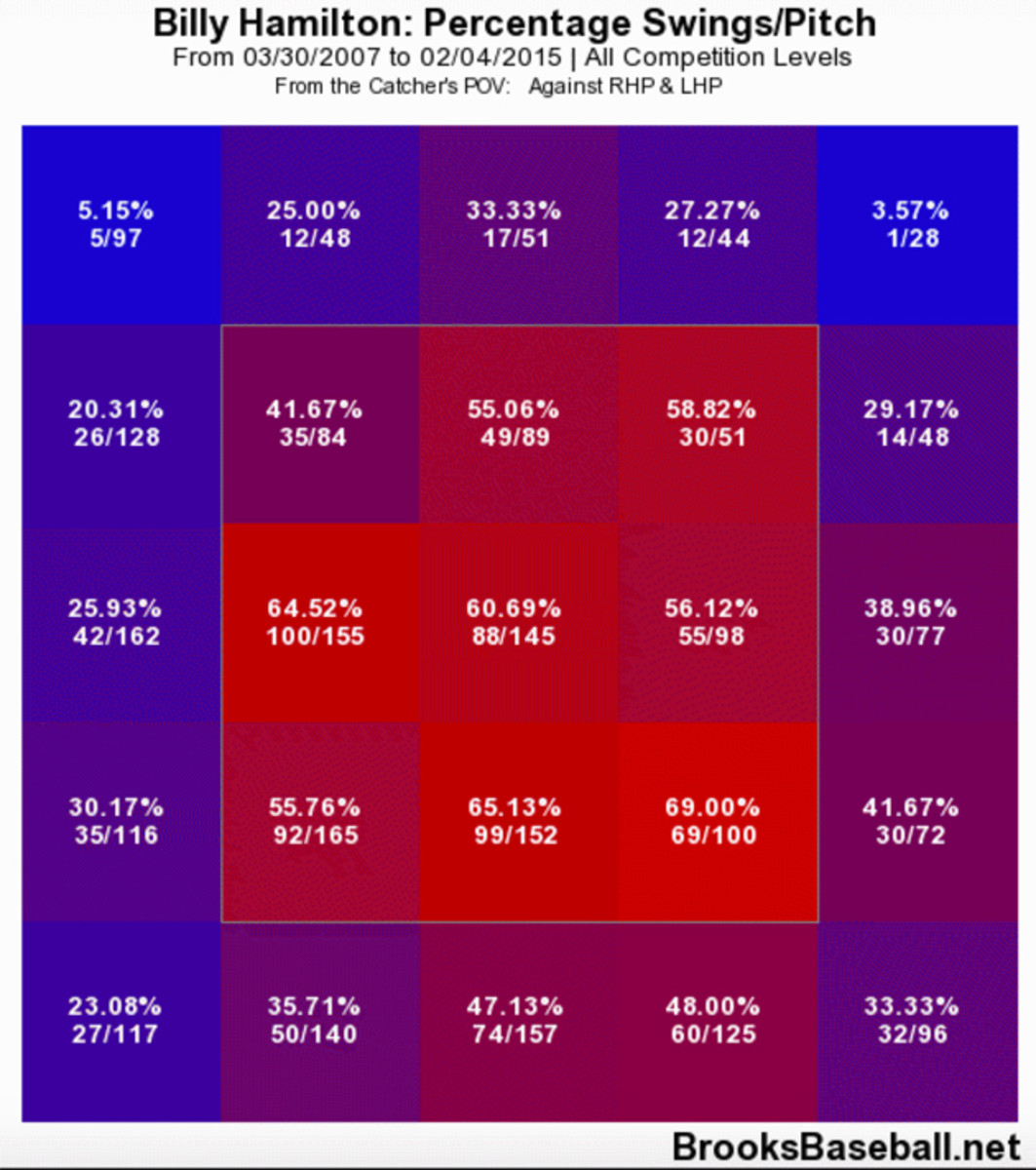
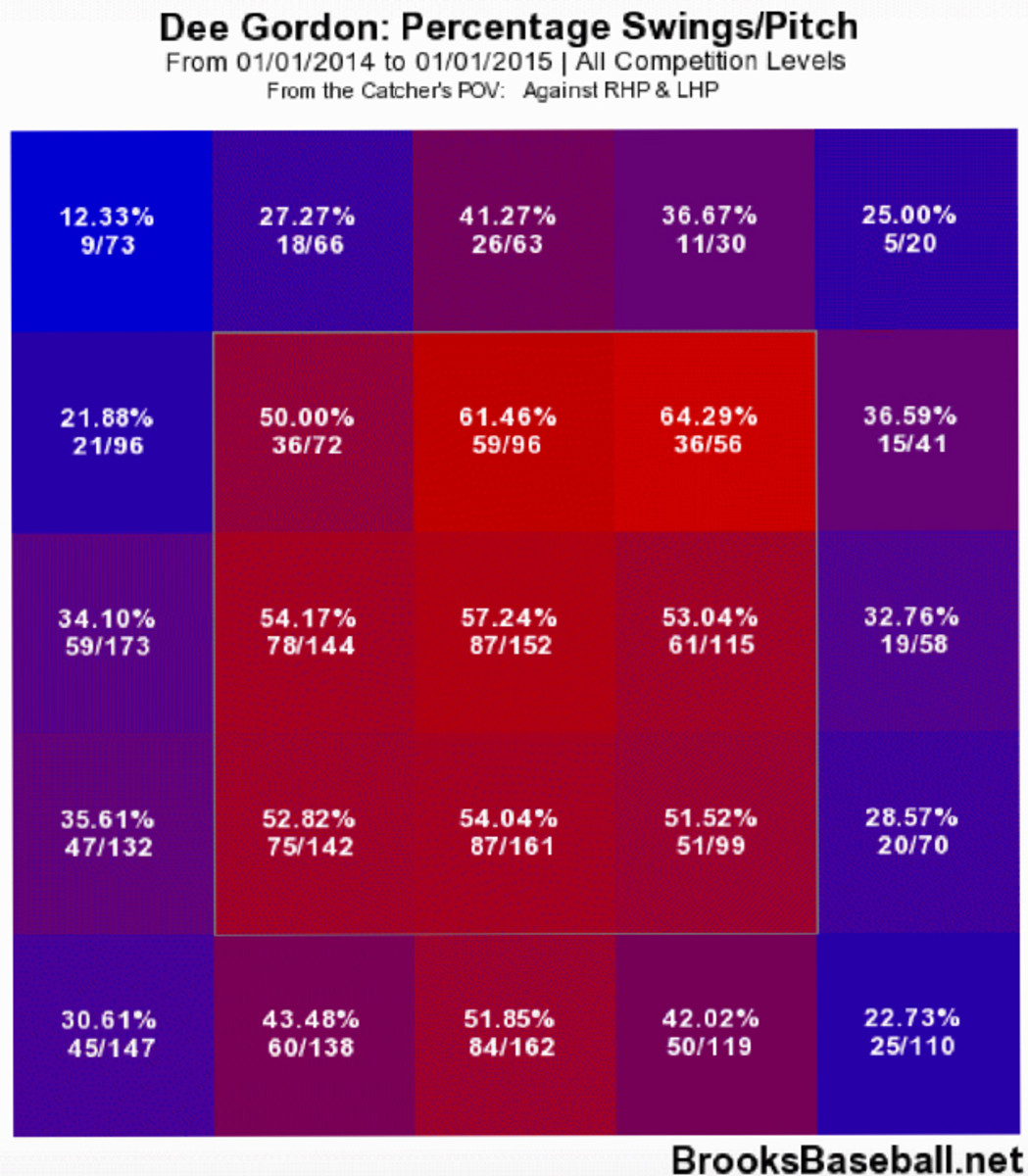
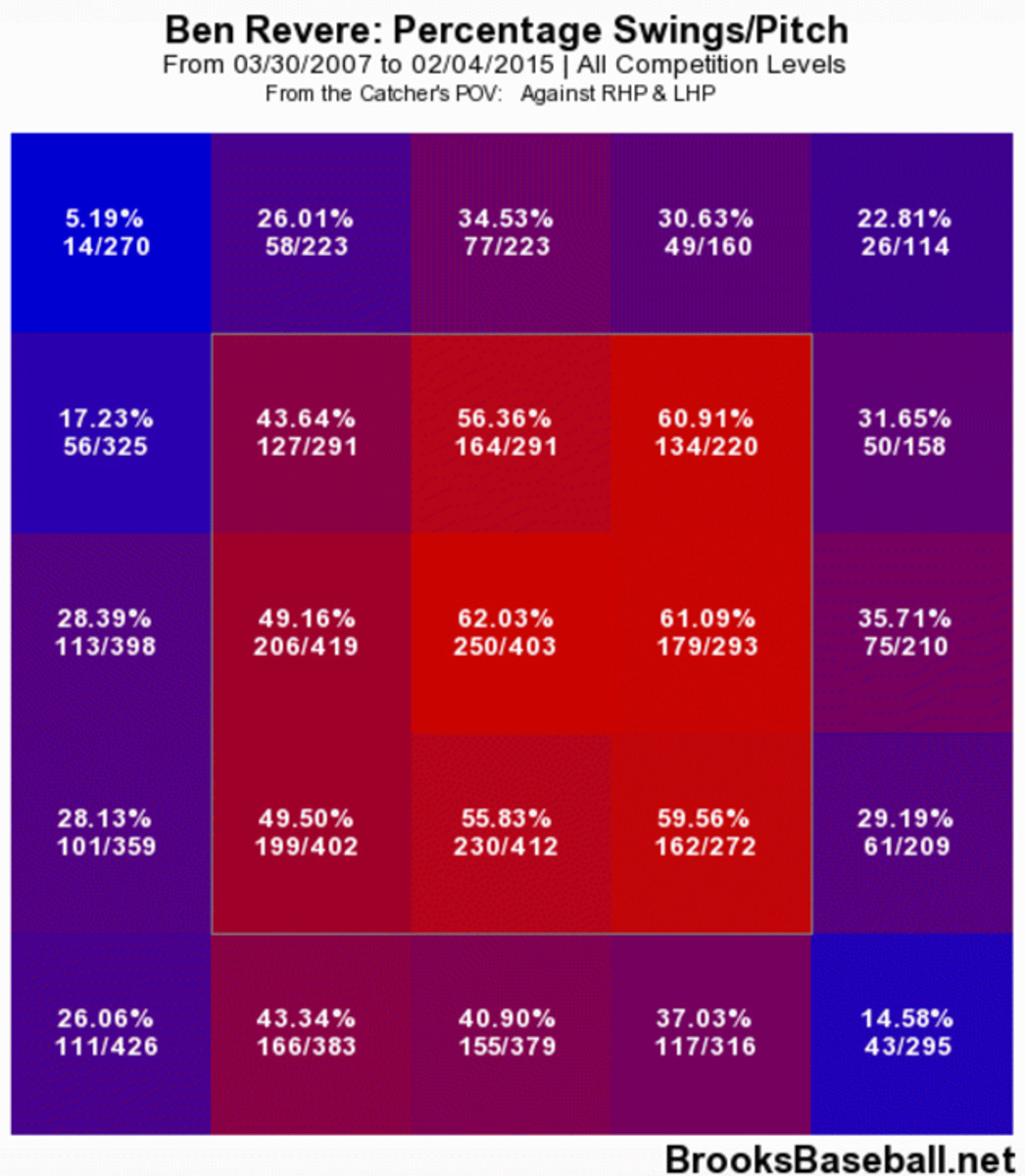
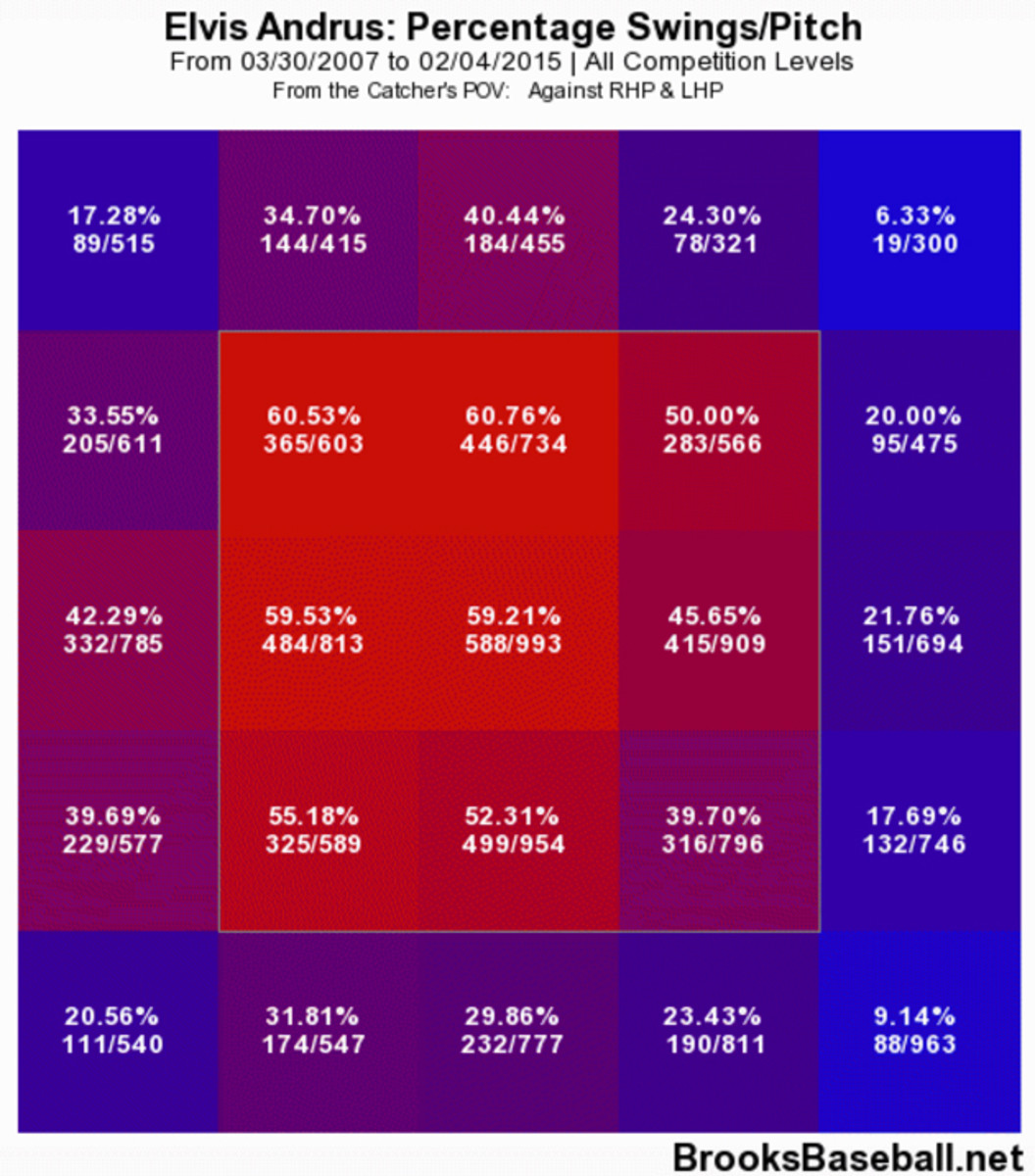
Not only did that not reveal our answer, it actually only made things worse. Hamilton swung less frequently at high strikes than any of the other three players, and more frequently at low ones. Nor does he swing too often at pitches outside the zone. His 30.3-percent O-swing percentage, which measures how often a hitter swings at balls, is completely manageable.
It shouldn’t be a surprise that Hamilton has a higher fly-ball rate by zone than Gordon, Revere and Andrus. What was a shock, however, was that Hamilton had a fly-ball rate of 23.3 percent on low strikes. For comparison’s sake, Giancarlo Stanton, who has a fair degree of power, and a higher overall fly-ball rate than Hamilton, had a 16.8-percent fly-ball rate on low strikes. Hamilton’s problem isn’t approach, which would be a better one for the Reds and prospective fantasy owners. No, it’s more likely that he has a fundamentally flawed swing path that’s causing him to lift balls he should be hitting on the ground.
Here’s an example from an August game against the Braves. Hamilton is facing Julio Teheran with a man on first and two outs. On a 1-1 count, Teheran throws his admittedly devilish changeup, and spots it beautifully low and away. This is just the sort of pitch Hamilton should want to see. It’s an offering he can slap to the left side, either hoping it can find a hole or that he can use his speed to beat it out. Instead, this is what happens.
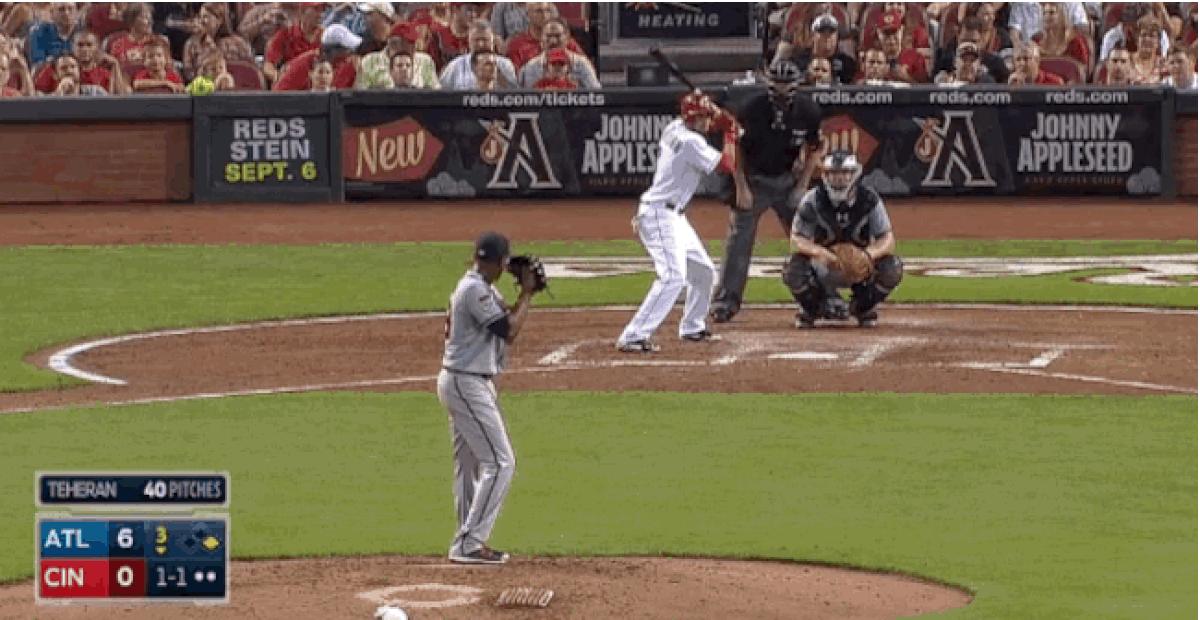
Not to be lost in the shuffle, here’s what he did on the first pitch of the at-bat.
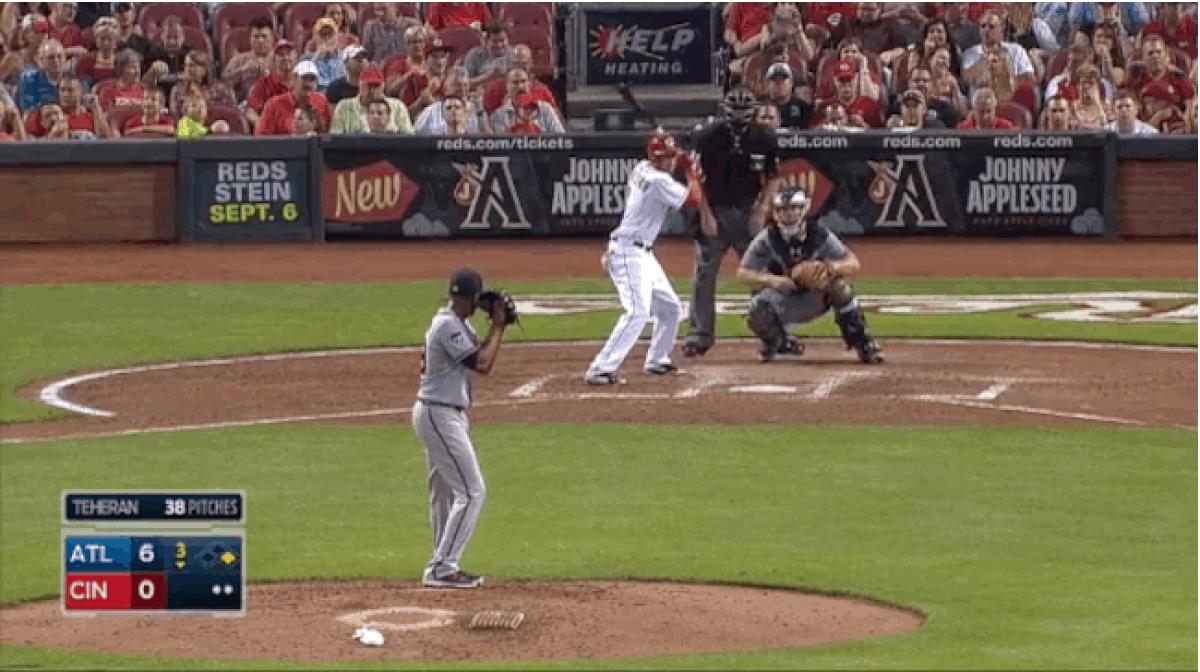
It’s good that he misses foul, but a player with his speed doesn’t need to try to be this fine when bunting for a hit. Hamilton should be able to improve as a bunter this year, but that won’t bring up his OBP enough on its own. He’s going to have to walk more, or hit the ball in the air less. Ideally, he’ll do both. Still, he feels like too much of a risk at his 46.04 average draft position. He may have swiped 56 bags last year, but he also got nabbed 23 times. Add in the fact that the Reds offense could struggle if Joey Votto and Jay Bruce don’t bounce back, and Hamilton may not have as much run-scoring upside as it seems. I’m staying away at the expected price point.
